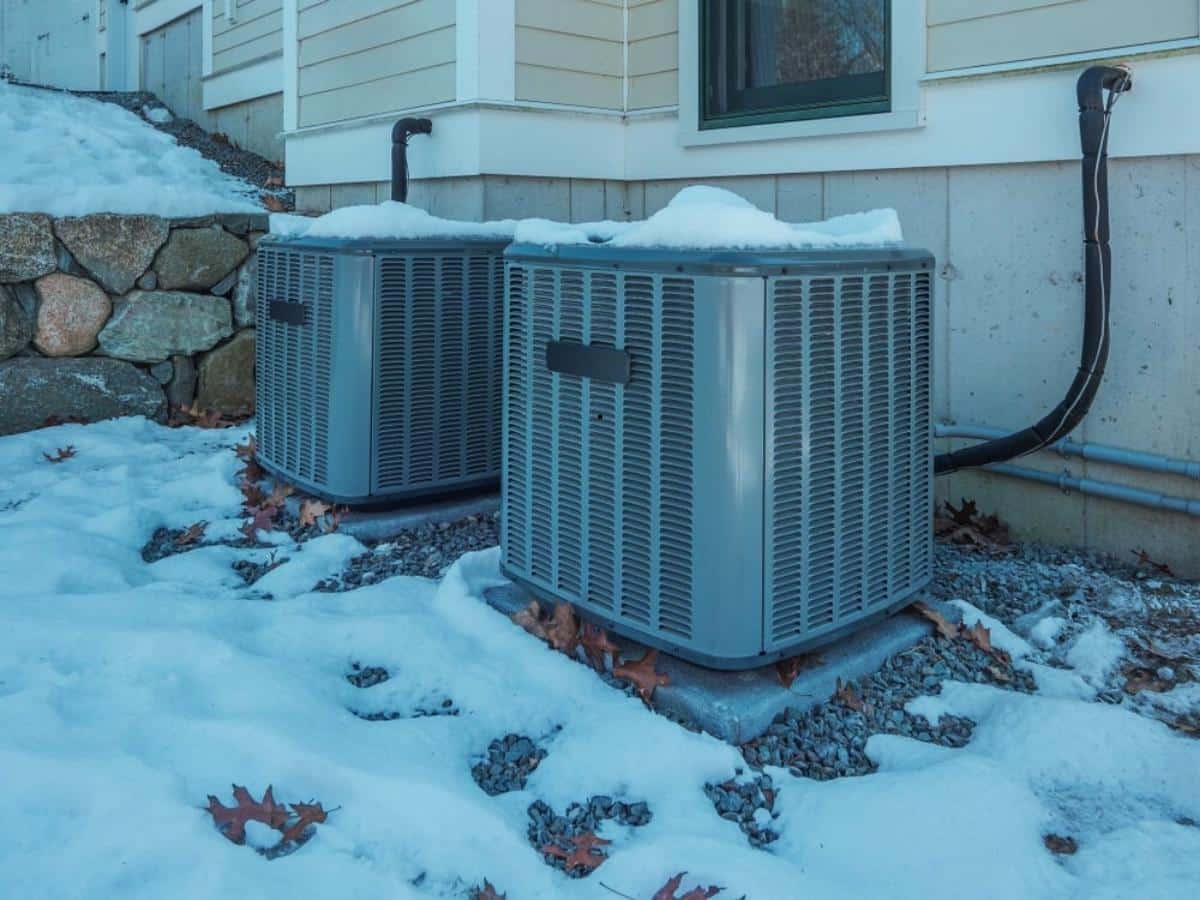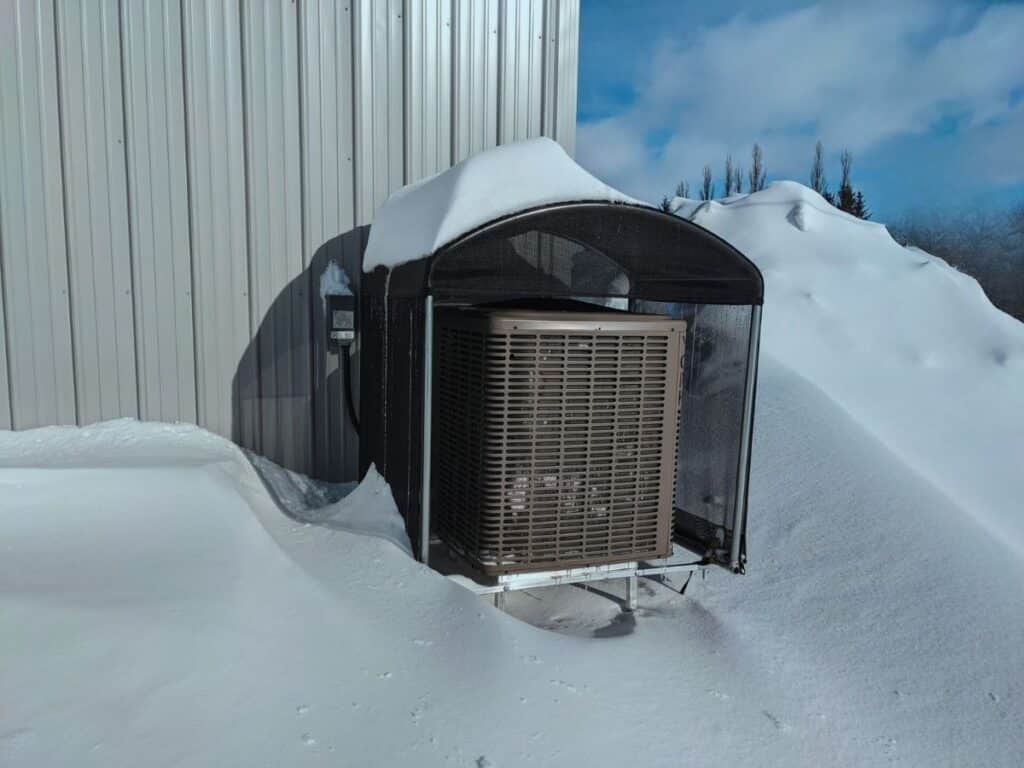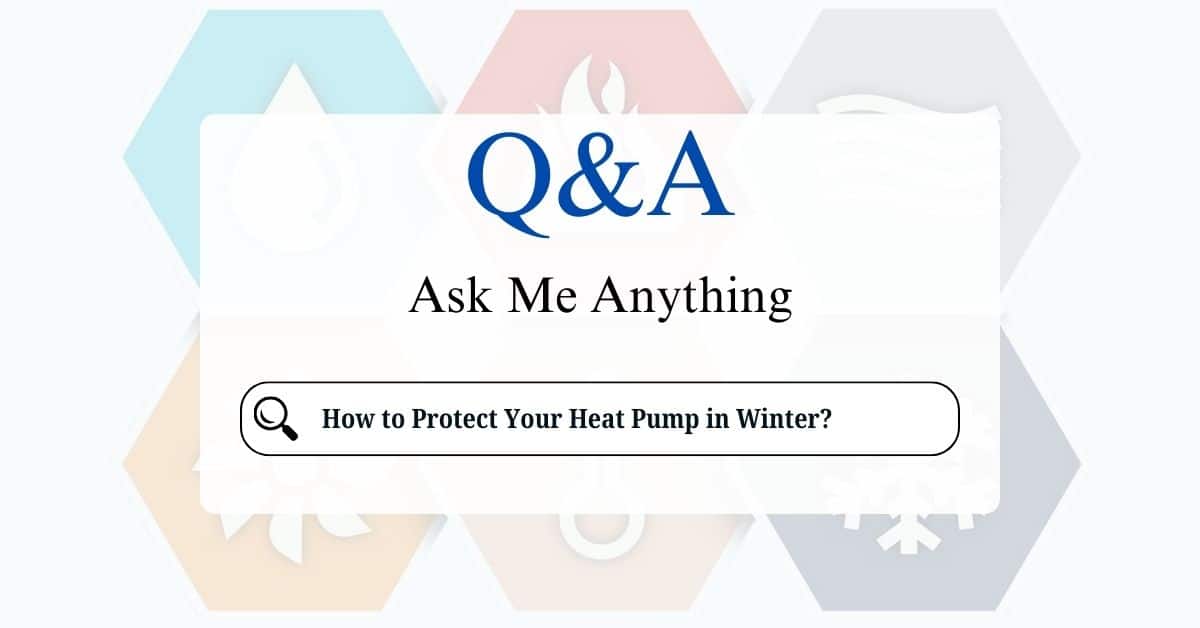Heat pumps are incredibly efficient for both heating and cooling, providing year-round comfort. However, winter weather can present some challenges. Taking a few proactive steps to protect your heat pump during the colder months can ensure it operates efficiently and reliably, preventing costly repairs and extending its lifespan. This friendly guide will walk you through the essential steps to winterize your heat pump.
While heat pumps are designed to operate in cold weather, certain winter conditions can impact their performance:
- Ice and Snow Buildup: Ice and snow can accumulate on the outdoor unit, reducing airflow and hindering heat transfer.
- Debris Accumulation: Leaves, branches, and other debris can accumulate around the unit, also restricting airflow.
- Extreme Cold: While heat pumps can extract heat from cold air, their efficiency decreases as temperatures drop significantly.

Essential Steps to Protect Your Heat Pump in Winter
1. Clear Snow and Ice Around the Unit
- Keep the Area Clear: Ensure at least 18–24 inches of clearance around the outdoor unit to allow proper airflow.
- Remove Snow Accumulation: Regularly clear snow from the top and sides of the unit using a soft broom or brush. Avoid using sharp tools that could damage the fins or coils.
- Prevent Ice Buildup: If ice forms on the coils or fan, turn off the system and pour warm (not hot) water over the affected area to melt it. Avoid forcefully chipping away the ice.
2. Install a Heat Pump Cover
- Use a heat pump-specific cover to protect the top of the unit from falling snow and debris.
- Ensure the cover doesn’t block airflow or trap moisture, as this could lead to damage.

3. Elevate the Unit
- If your heat pump is close to the ground, elevate it by a few inches to prevent snow from accumulating around the base.
- Many heat pumps are already installed on raised platforms; check that yours is high enough for your area’s average snowfall.
4. Maintain Proper Drainage
- Ensure the ground around the heat pump slopes away from the unit to prevent water from pooling and freezing.
- Clear the condensate drain line regularly to ensure it remains unobstructed.
5. Check the Defrost Cycle
- Heat pumps have an automatic defrost cycle to remove frost or ice from the outdoor unit.
- Test the Defrost Function: If ice frequently accumulates and doesn’t melt, the defrost cycle may not be working correctly. Contact an HVAC professional for repairs.
6. Use a Wind Barrier
- Install a windbreak (e.g., shrubs, fencing, or a partition) around the unit to shield it from strong winds and drifting snow.
- Ensure the barrier is at least 2–3 feet away to allow sufficient airflow.
7. Clean the Unit Regularly
- Remove dirt, leaves, and other debris from the coils and fins to maintain airflow.
- Inspect the outdoor fan for obstructions and clean it as needed.
8. Adjust the Thermostat Settings
- Use the thermostat’s “Emergency Heat” or “Auxiliary Heat” mode only in extreme conditions, as these modes bypass the heat pump and use the backup heating system.
- Avoid frequent temperature adjustments to prevent overworking the system.
9. Schedule Professional Maintenance
- Have your heat pump serviced by a licensed HVAC technician before winter to ensure it’s in peak condition.
- Maintenance tasks include:
- Checking refrigerant levels.
- Inspecting and cleaning the coils.
- Testing the defrost cycle and electrical connections.
10. Power Down During Severe Weather (Optional)
- If a major snowstorm or ice storm is forecast, you can temporarily turn off the heat pump to prevent damage.
- After the storm, clear the area around the unit and turn it back on.
Things to Avoid
- Do Not Cover the Entire Unit: Wrapping the entire heat pump can trap moisture, leading to rust and damage.
- Avoid Using De-icing Chemicals: Chemicals like salt can corrode the unit’s components. Use warm water instead.
- Don’t Block Airflow: Ensure the unit can “breathe” by keeping the surrounding area clear.
What to Do if You Suspect a Problem
If you notice any of the following issues, contact a qualified HVAC technician:
- Excessive ice buildup that doesn’t melt during the defrost cycle.
- Reduced heating capacity.
- Unusual noises or vibrations from the unit.
- Increased energy bills without a change in usage.
By taking these proactive steps to protect your heat pump during the winter, you can ensure it operates efficiently and reliably, keeping your home warm and comfortable throughout the cold months. Regular maintenance and prompt attention to any potential problems will help extend the lifespan of your system and prevent costly repairs.






